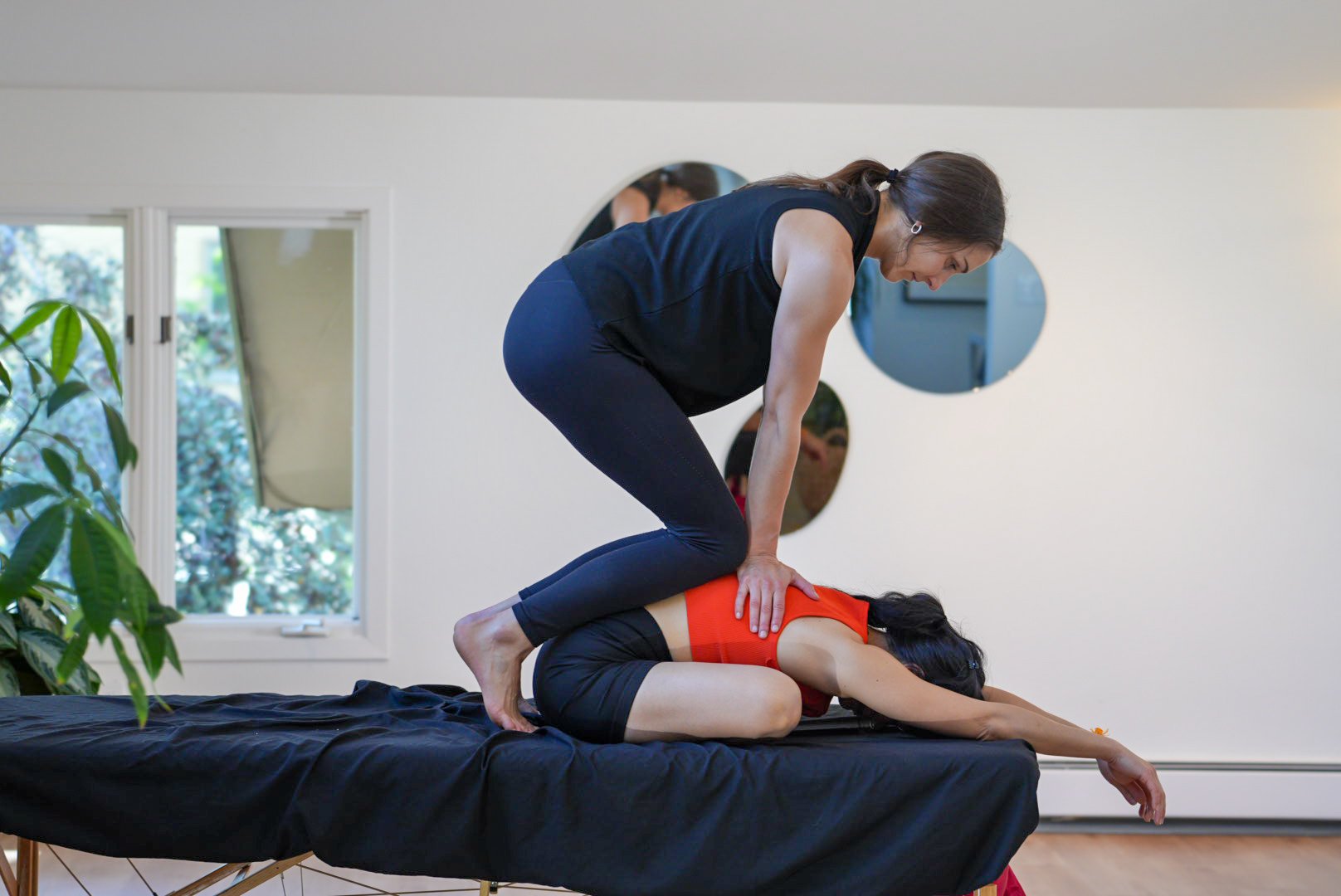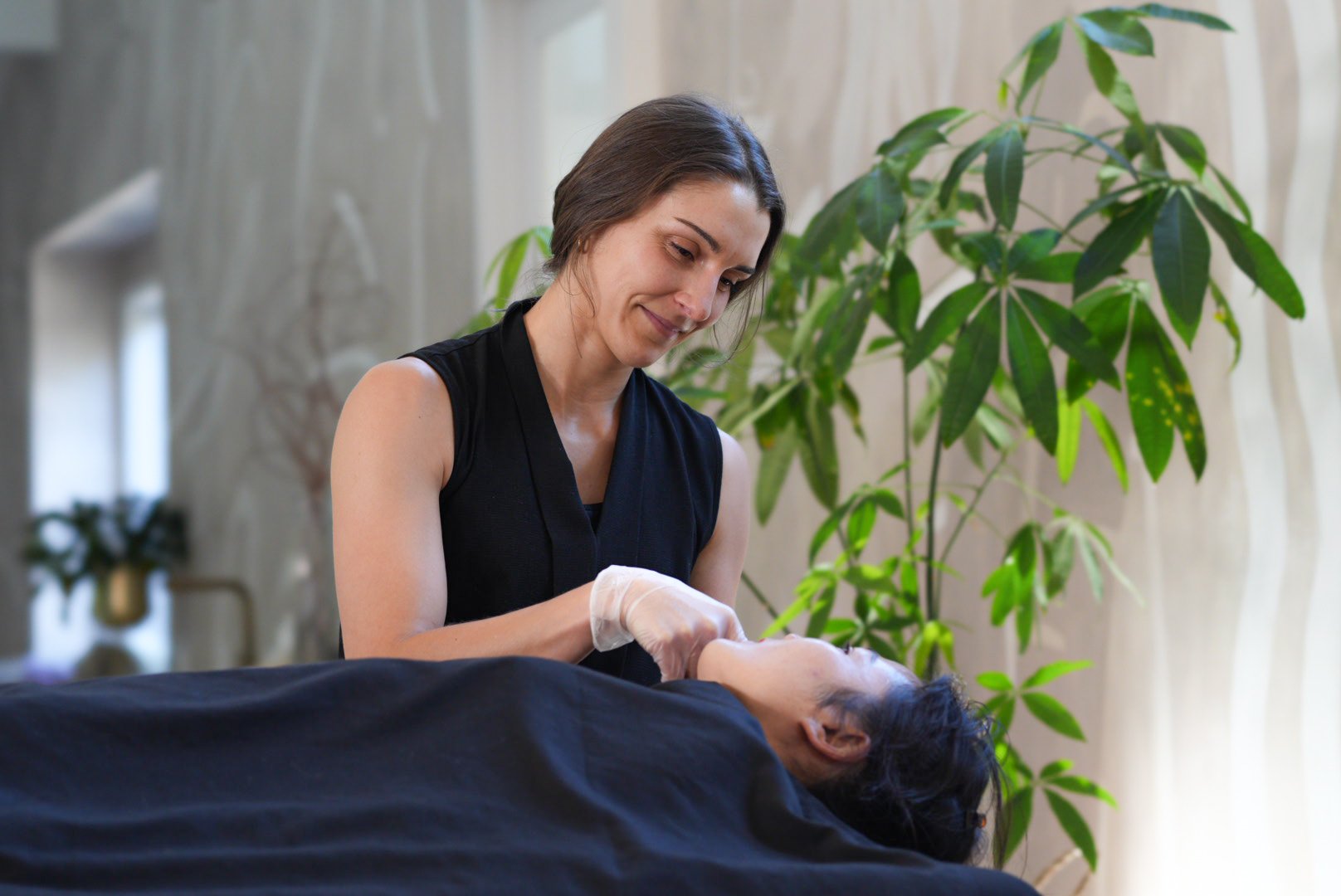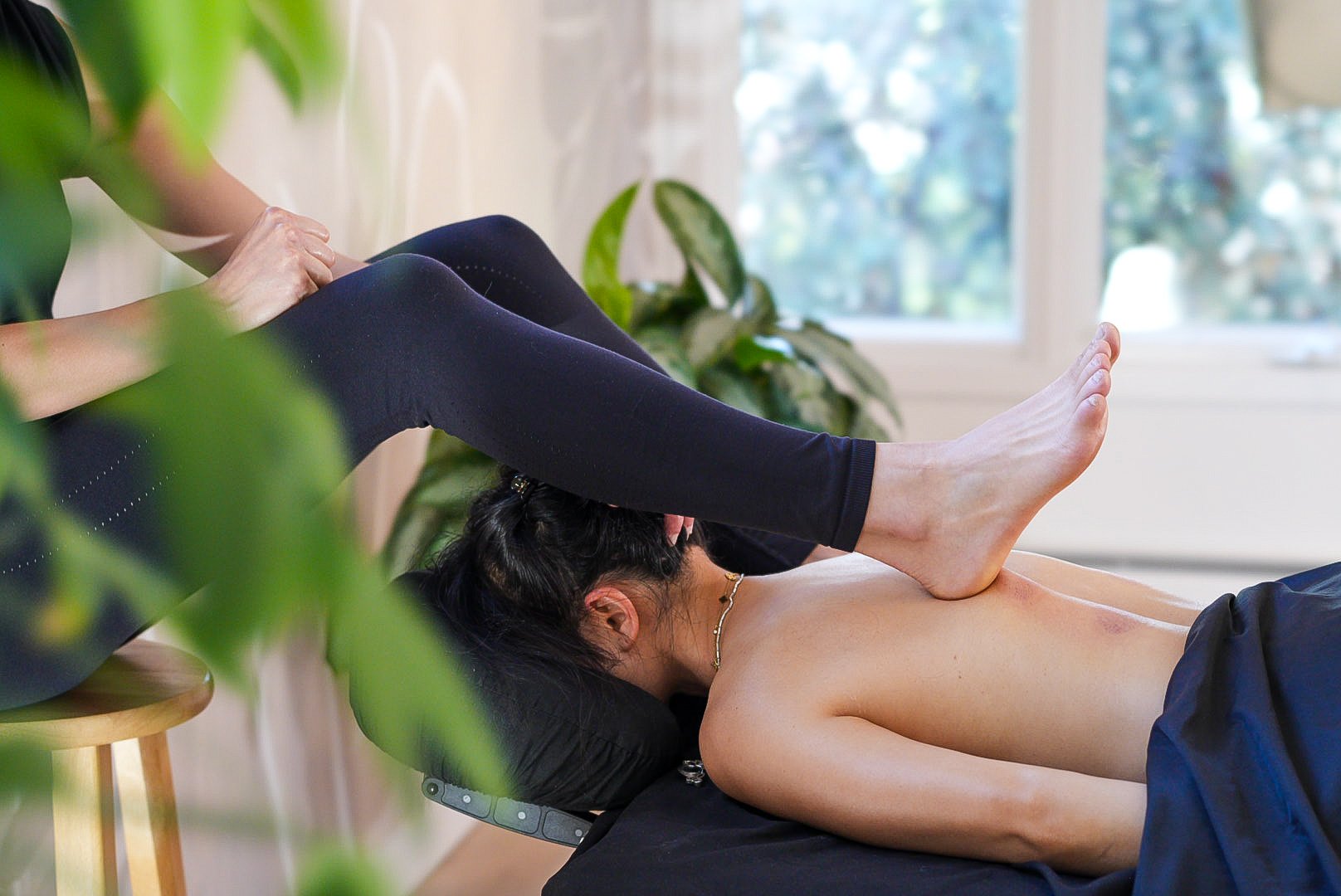THERAPEUTIC MASSAGE
integrative massage
-
Integrative massage therapy is a treatment that involves the integration of therapy techniques from a number of different massage modalities including Swedish, Neuromuscular, Thai, Trigger Point therapy, and Shiatsu.
The integrative massage technique is based on the idea that not just one massage is right for every problem. That is why, through using a variety of techniques, every individual problem of the body can be targeted and addressed with its own approach producing optimal results.
-
An intake form will be sent to you prior your appointment. Based on your needs, I will use different techniques throughout the treatment. The client takes an active role in the therapy, working closely with the therapist. The relationship between client and therapist is crucial in the process. As a team, you and I will meet and discuss what you are looking for and what techniques will best suit your needs.
-
Click on Book to get information on our prices.
Traditional THAI MASSAGE
-
Thai massage uses a combination of pressure, stretch, and joint mobilization to achieve a deep state of relaxation. It is said to be both invigorating and relaxing, and has been used for centuries. Thai massage is often described as "lazy yoga" because the therapist will use their hands, elbows, knees, and feet to move you into a series of stretches. This is different from Swedish or deep tissue massages, which are more focused on relaxation and don't involve as much stretching.
-
Thai massage can help to improve flexibility, increase range of motion, and relieve muscle tension and pain. It can also help to improve circulation and promote a sense of calm and well-being.
-
Click on Book to get information on our prices.
TMJ Treatment
-
Do you suffer from jaw pain, neck aches, headaches, ear pain, migraine, difficulty opening/closing the jaw, clicking/ popping, grinding teeth or difficulty chewing?
These are just a few of the symptoms associated with Temporomandibular Joint (TMJ) disorders. Up to 70 percent of people have symptoms of temporalmandibular joint (TMJ) syndrome at some point in their lives. At Wu-Wei, I provide treatments designed to relieve pain, increase mobility, and improve your overall quality of life. I invite you to learn more about this transformative therapy and how it can help you regain your comfort and well-being.
Understanding TMJ Disorders
What is the Temporomandibular Joint (TMJ)?
The Temporomandibular Joint is a complex joint connecting your jawbone to your skull. It allows for a wide range of movements, including opening and closing your mouth and moving it side to side. Due to its complexity and frequent use, the TMJ is susceptible to various disorders that can cause discomfort, pain, and limited mobility.
Potential causes include trauma to the face or neck, clenching, grinding the teeth, uneven jaw, allergies to site a few.
After being diagnosed by your dentist or doctor, correction includes muscular pain treatment and restoration of proper alignment of the joint so healing can occur.
I recommend 3 to 6 sessions in order to see great results.
-
TMJ massage therapy focuses on relieving tension in the muscles and soft tissues surrounding the Temporomandibular Joint. This specialized treatment can:
-Alleviate pain and discomfort
-Improve jaw mobility
-Reduce inflammation
-Address the root causes of TMJ disorders
-Enhance overall well-being
-
I use a combination of techniques to effectively address TMJ disorders, including:
Myofascial release: A gentle technique targeting the fascia, a connective tissue that envelops muscles and bones, to release tension and restore mobility.
Trigger point therapy: Applying focused pressure on tender points within the muscles to relieve pain and dysfunction.
Intraoral massage: A specialized technique that involves massaging the muscles inside the mouth, targeting the internal structures of the TMJ directly. I wear gloves to ensure a safe, hygienic treatment.
Deep tissue massage: Applying firm pressure to reach deeper layers of muscle and connective tissue, breaking up adhesions and releasing chronic tension.
-
Relief from Pain: TMJ massage often helps alleviate the pain and discomfort that results from TMJ disorders. This includes pain in the jaw, face, and sometimes even neck and shoulders.
Improved Jaw Movement: Regular TMJ massages can help increase the mobility and flexibility of the jaw, making everyday activities like eating, talking, and yawning more comfortable.
Stress Reduction: As with other forms of massage, TMJ massage can be effective in reducing stress and promoting relaxation. This is beneficial because stress can often exacerbate symptoms of TMJ disorders.
Lessen Headaches: TMJ disorders often cause headaches due to the tension and strain in the jaw muscles. TMJ massage can help alleviate these headaches.
Reduce Inflammation: Massage has been known to help reduce inflammation and swelling, which are common symptoms of TMJ disorders.
Improve Posture: TMJ issues can sometimes lead to poor posture as individuals may adjust their head and neck position to minimize discomfort. Regular TMJ massage can help improve these postural issues.
Prevent Lockjaw: Regular TMJ massage can help prevent episodes of lockjaw, a condition where the jaw becomes temporarily stuck in position, either open or closed.
Improved Sleep: Many people with TMJ disorders experience sleep disturbances due to the pain and discomfort. By relieving these symptoms, TMJ massage can contribute to better sleep quality.
Non-invasive Treatment Option: TMJ massage offers a non-surgical, non-pharmacological option for managing TMJ disorder symptoms, making it a good choice for those who prefer or need non-invasive treatments.
neuromuscular therapy
Neuromuscular Therapy works with releasing trigger points by putting static pressure on pain points that often create symptoms in other parts of the body. The goal is to improve nervous system function, restore range of motion and reduce pain and tension. Your therapist may also use resistive muscle stretches to reset old muscle patterns.What are trigger points you may ask?
Trigger points are microscopic areas of metabolic stagnation in muscle fibers that produce nociceptive (danger) signals in the nervous system. Pain from trigger points is usually experienced at a different place than where the trigger points are located. This is called referred pain. Referred pain from muscles frequently feels like it is over or within a joint and fools most pain sufferers and medical practitioners who are unaware of this common pain source.deep tissue massage
Deep Tissue massage treats chronic and acute pain and musculoskeletal issues using slow, deep strokes to target the deeper layers of one’s muscles and connective tissues.
It can serve to break up scar tissue and muscle adhesion, reduce inflammation, improve circulation, restore range of motion and relieve chronic pain and stiffness.




